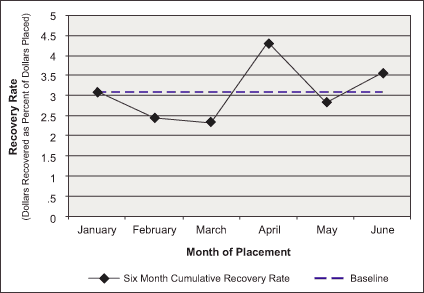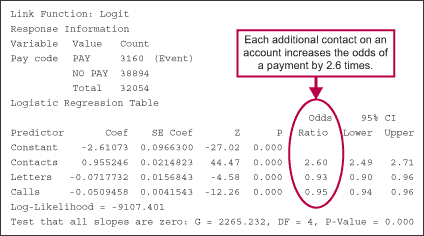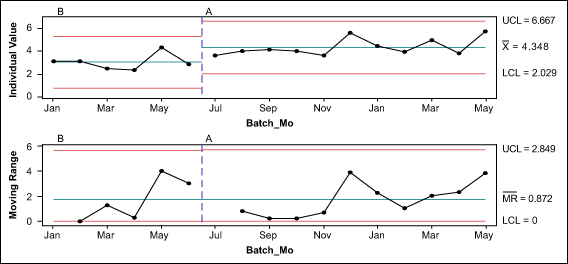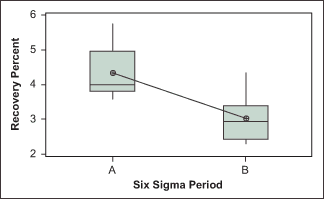
A midsized debt collection agency was in trouble with one of its largest clients. The client was unhappy with the agency’s debt collection rate, and was threatening to take their business elsewhere if things did not improve. The manager of the agency division involved had just become a Green Belt and he thought this would be a good test of the Lean Six Sigma methodology.
Understanding the urgency to find a permanent fix to this low-collection-rate problem, corporate management agreed and chartered a team to be led by the Green Belt.
The Problem Solving Begins
Like many financial services sectors, the collection industry is data rich but information poor. That is, there is all types of data that can be measured on a daily or even a per-call basis, but decisions are often made by “gut feel” and “this is how we’ve always done business.”
The team’s first challenges, therefore, were to define the process and the data that it needed to gather, which would be the “process voice” for the client’s needs (Figure 1).

The team began looking at translating client needs into process metrics, or measures. The team recognized several peculiarities in the data that it would have to deal with:
- There is an annual cycle to the amount of recovered debts. For instance, there is a peak in debt payment during tax refund season and a valley right before the Christmas holidays. If the metrics the team used did not level out that effect, it would be difficult to compare performance across the year.
- The amount of any particular debt collected increased over time, as the account “aged.” That was in part because the agency had more time to work the account, and in part because this particular agency worked hard to negotiate payment plans. The agency reasoned that allowing debtors to pay regular, small amounts of money was often more successful than demanding a larger lump sum. Therefore, the age of accounts had to be reflected in the metric as well.
- There was a strong correlation between the percentage of accounts that had been worked with the gross debt collected. Thus, the company had confidence that its approach was basically sound. Had the approach been ineffective, there would be no such correlation.
As a consequence of these considerations, the project team decided to use a six-month “cumulative recovery” rate as its metric. So, for example, the team would look at how much of the debt added to the rolls in January was recovered between January and June. The team thought that using a six-month window would even out the cyclic effect and reflect the impact of account age.
Baselining: Where Do Things Stand Now?
To establish a baseline against which the team would measure its success, historical data was pulled and the six-month cumulative recovery rates were calculated (Figure 2). The average six-month recovery rate turned out to be 3.1 percent.

Where Does the Agency Want to Be?
The issue of “Where does the agency want to be?” has a couple of components:
- Knowing what the best performers are capable of achieving
- Figuring out how much improvement is reasonable given where the agency is today
The team addressed the first of these issues by benchmarking another communication industry client where recovery rates were higher, close to 5 percent. The team decided to aim for a 60 percent improvement in the gap between where the process was and the benchmark, establishing a goal of a 4.3 percent cumulative recovery rate.
Process Input Variables and Analysis
The two most useful approaches used by this team to understand and solve the process problems were cause-and-effect analysis and application of the Pareto principle (which few causes contribute the most to the observed problems). Team members ended up narrowing their focus to three factors:
- Letters that were sent to the debtor
- Number of times the debtor was called
- Personal contact with the debtor
With factors reduced down to three, the team was able to perform a sophisticated statistical analysis called binary logistic regression to see what was different between debtors who paid versus those who did not. This analysis showed that each additional personal contact with the debtor increased by 2.6 times the likelihood that they would pay, whereas neither more letters sent nor more phone calls to the debtor were effective (Figure 3).

Project Team Selects a Solution
Knowing that personal contact with a debtor was critical, the team had to look at how the process was run and what it would take to improve contact with debtors. Team members generated many solution ideas, but discounted most of them after analysis of the risks involved, the lack of control that the organization had over the potential process, or the unrealistic nature of the ideas.
Finally, though, the team hit upon one solution that satisfied all team members: Making a protocol change in how the automatic dialing program decided which numbers to dial. Previously, all phone numbers were treated equally; now the auto dialer gave priority to accounts where there had not been any personal contact. This solution worked well because it was entirely within the control of the agency, it was transparent to the client and the debtors, and no capital expenditure was necessary.
The Results: Short and Long Term
The solution was piloted in a small segment of the client’s accounts. This resulted in an immediate jump in the recovery rate of $54,000 annually in gross collections. Figure 4 shows the increase in the average six-month cumulative recovery rate for the segment of client accounts affected by the pilot improvement. Figure 5 shows graphically the improvement to the recovery percentage made during the pilot program.

The results were verified to be significant both practically and statistically, so the improvement was rolled into the entire client portfolio. The collection agency hit its target of a 4.3 percent recovery rate, and the client realized an annual increase of $865,000 in gross collected debt.

The agency’s corporate management was extremely pleased with the outcome of this project. The agency not only retained the complaining client’s business but used the capability improvements to save another account. The fact that the agency is now using Lean Six Sigma and having tangible results is a selling point it emphasizes with both current clients and prospects.